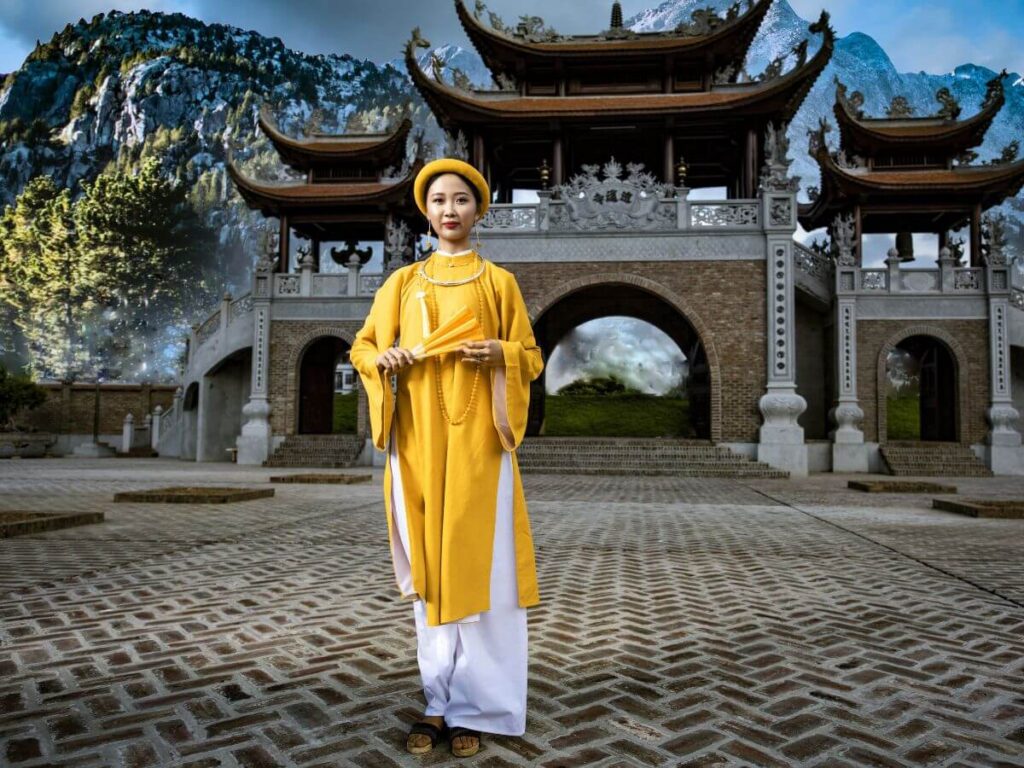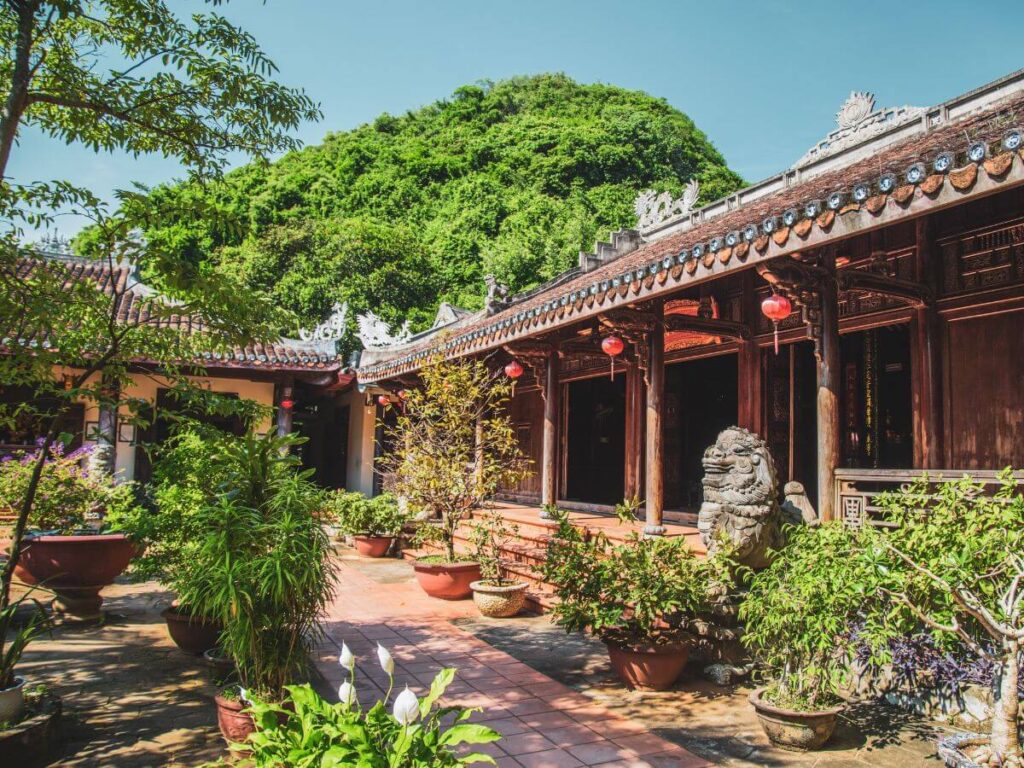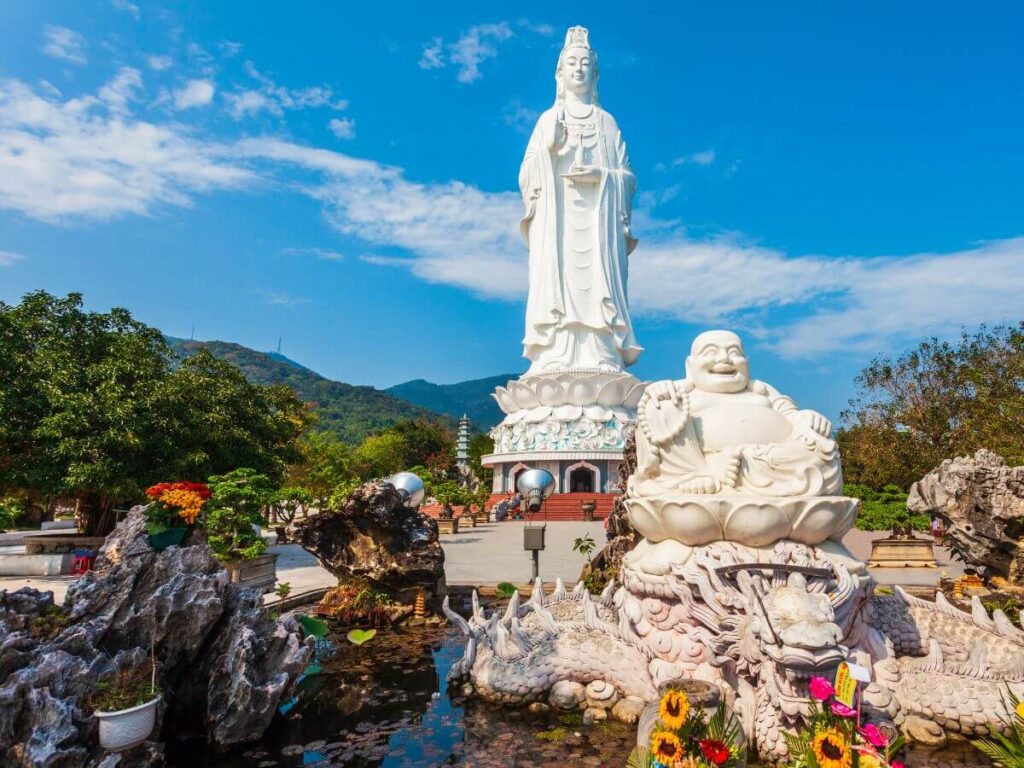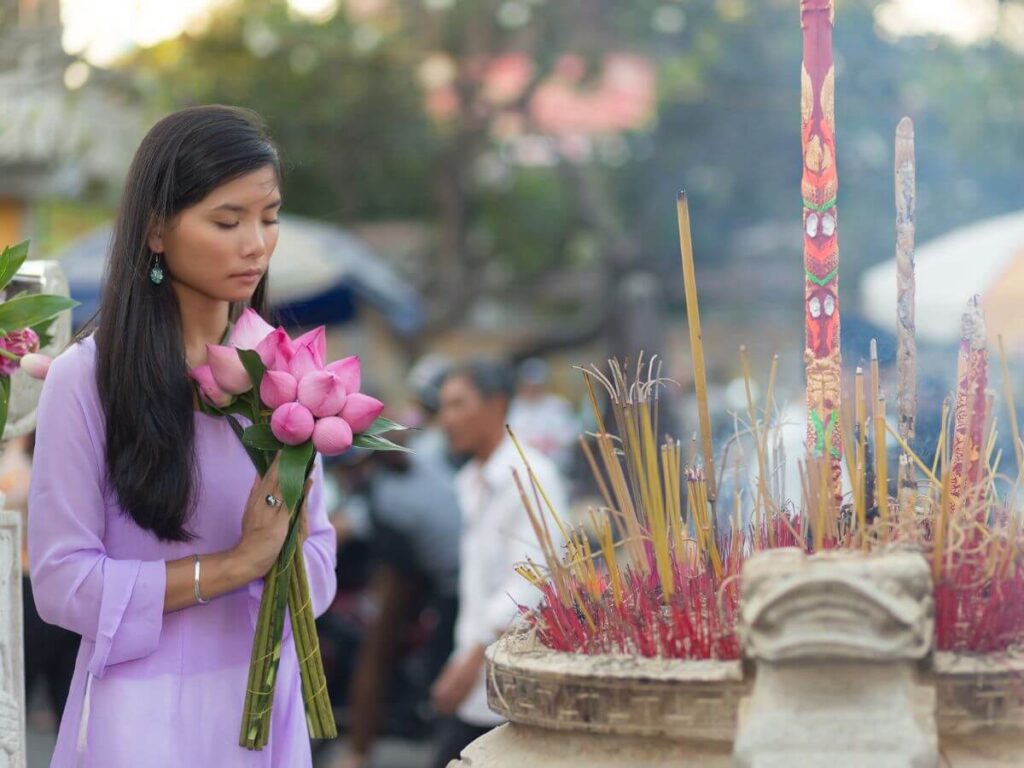Discover Vietnam’s most sacred Buddhist temples, where ancient architecture meets spiritual traditions. From centuries-old pagodas in Hanoi to peaceful monasteries in the Mekong Delta, explore these remarkable sanctuaries that showcase Vietnam’s rich Buddhist heritage and cultural significance.

What is the Historical Timeline of Buddhism in Vietnam?
How Did Buddhism Evolve in Vietnam: From Origins to Present Day
Buddhism appeared in Vietnam around the 2nd century AD, through monks from India and China. The Ly-Tran period (11th-14th century) is considered the golden age of Buddhism in Vietnam when Buddhism played an important role in cultural and political life.
Currently, Vietnam mainly follows two major branches: Northern Buddhism (Mahayana) and Southern Buddhism (Hinayana). Buddhism is not only a religion but also an important part of the spiritual life of Vietnamese people.
What Are the Distinctive Features of Vietnamese Buddhism?
Most followers of the religion have common features and identifying characteristics such as:
- In harmony with folk beliefs: Mother Goddess worship, ancestor worship.
- Buddhist festivals are associated with national cultural events, such as the Vu Lan festival, and Buddha’s Birthday.
- The architecture of pagodas in Vietnam combines Buddhist elements and indigenous culture, creating a unique beauty.
Discover Related Guides: Vietnam National Flower: The Sacred Lotus – History & Symbolism
Where to Find Vietnam’s Most Significant Buddhist Temples
Each pagoda in Vietnam is not only a place of worship but also a place to preserve history, culture, and stories associated with the spiritual life of Vietnamese people. From North to South, these pagodas are not only pilgrimage sites but also attractive tourist destinations for anyone who wants to learn and explore the spiritual beauty of the country.

3 Must-Visit Buddhist Temples in Northern Vietnam
1. Huong Pagoda (Hanoi)
Location: Located in Huong Son commune, My Duc district, Hanoi.
Highlights:
- This is a complex of many pagodas, temples, and caves, of which Huong Tich Cave is known as “Nam Thien De Nhat Dong.”
- The Huong Pagoda Festival takes place from January 6 to March of the lunar calendar, attracting millions of tourists.
- Cultural beauty: The pilgrimage by boat on Yen stream brings a peaceful and close-to-nature experience.
2. Bai Dinh Pagoda (Ninh Binh)
Location: Located in Trang An scenic complex, Ninh Binh province.
Highlights:
- The largest pagoda in Southeast Asia with an area of 700 hectares.
- It owns the largest bronze Buddha statue in Vietnam (10m high, weighing 100 tons).
- The architecture blends traditional and modern styles, with the longest corridor in Asia containing thousands of Arhat statues.
3. One Pillar Pagoda (Hanoi)
Location: One Pillar Pagoda Street, Ba Dinh District, Hanoi.
Highlights:
- Built during the reign of King Ly Thai Tong (1049), the unique architecture symbolizes a lotus rising from the water.
- A cultural symbol, recognized by UNESCO as a world cultural heritage.
Continue Learning: Vietnamese Lucky Money: Essential Guide to Tet Tradition
3 Sacred Buddhist Temples in Central Vietnam
1. Thien Mu Pagoda (Hue)
Location: Located on the banks of the Perfume River, about 5km from the center of Hue.
Highlights:
- Built in 1601 by Lord Nguyen Hoang.
- The 7 storey Phuoc Duyen Tower, 21m high, is the symbol of the pagoda.
- According to legend, this is a sacred place with many mysterious stories related to the peace of the country.
2. Linh Ung Pagoda (Da Nang)
Location: Son Tra Peninsula, Da Nang (In Google Map: https://g.co/kgs/vp66EfN).
Highlights:
- The tallest statue of Buddha Quan Am in Vietnam (67m), faces the sea to protect fishermen.
- Modern architecture combined with tradition, located in the middle of pristine nature, attracts both domestic and foreign tourists.

3. Huong Tich Pagoda (Ha Tinh)
Location: Located on the Hong Linh mountain range, Ha Tinh.
Highlights:
- Built in the 13th century, it is known as “Hoan Chau’s most famous landscape.”
- The main cave worships Bodhisattva Avalokitesvara with legends about compassion and saving sentient beings.
- Visitors must climb or take the cable car to reach the pagoda, this journey brings a sense of peace and serenity.
3 Historic Buddhist Temples in Southern Vietnam You Should Visit
1. Vinh Trang Pagoda (Tien Giang)
Location: Located in My Tho city, Tien Giang.
Highlights:
- The largest pagoda in the West, with a unique East West architectural style.
- There are three large statues (Amitabha Buddha, Maitreya Buddha, and reclining Buddha) that make a strong impression on visitors.
- The campus is covered with green trees, bringing a sense of peace and comfort.
2. Buu Long Pagoda (Ho Chi Minh)
Location: District 9, Ho Chi Minh City.
Highlights:
- It is famous for its typical Theravada (Theravada) architecture, inspired by Thai temples.
- The temple does not burn incense, focusing on peace of mind and meditation, creating a sacred space.
- Voted as one of the most beautiful temples in the world by National Geographic.
3. Bat Pagoda (Soc Trang)
Location: Ward 3, Soc Trang City, Soc Trang Province.
Highlights:
- A Khmer temple imbued with the cultural identity of the Western region.
- Unique with thousands of large bats hanging from the treetops in the campus.
- The temple has a giant reclining Buddha statue and paintings about the life of Buddha.
How to Experience Vietnamese Buddhist Rituals

Buddhism has several traditional and solemn days that are well-known to many people, such as:
- Buddha’s Birthday: This takes place on the 15th day of the 4th lunar month, the biggest holiday of Buddhism.
- Vu Lan Festival: Held on the 15th day of the 7th lunar month to commemorate ancestors and parents.
- Peace Praying Ceremony: Usually held at the beginning of the year to pray for peace and luck.
- Releasing animals: An important ceremony, demonstrating the compassion of Buddhism.
- When visiting the temple, Vietnamese people often wear modest clothes, carry a sincere heart, perform worship, burn incense, and participate in meditation courses.
Explore More: 12 Most Popular Vietnamese Dishes You Must Try in 2024: Local’s Guide
Top Questions About Vietnamese Buddhist Temples Answered
What are the names of famous Buddhist temples in Vietnam?
Huong Pagoda, Bai Dinh Pagoda, Thien Mu Pagoda, and Linh Ung Pagoda are famous pagodas that attract many tourists.
Is Buddhism allowed in Vietnam?
Yes, Buddhism has not only been allowed but has flourished in Vietnam since the 2nd century. It is the largest religion in Vietnam today.
Which Buddhist sects are popular in Vietnam?
The two popular sects in Vietnam are Northern Buddhism (Mahayana) and Southern Buddhism (Hinayana). Mahayana is the majority, with a strong presence in temples across the country.
The famous Buddhist temples in Vietnam are not only sacred pilgrimage sites but also unique cultural, architectural, and spiritual symbols. Exploring the temples from North to South offers an opportunity to deeply understand the culture and history of Buddhism associated with the Vietnamese people.






